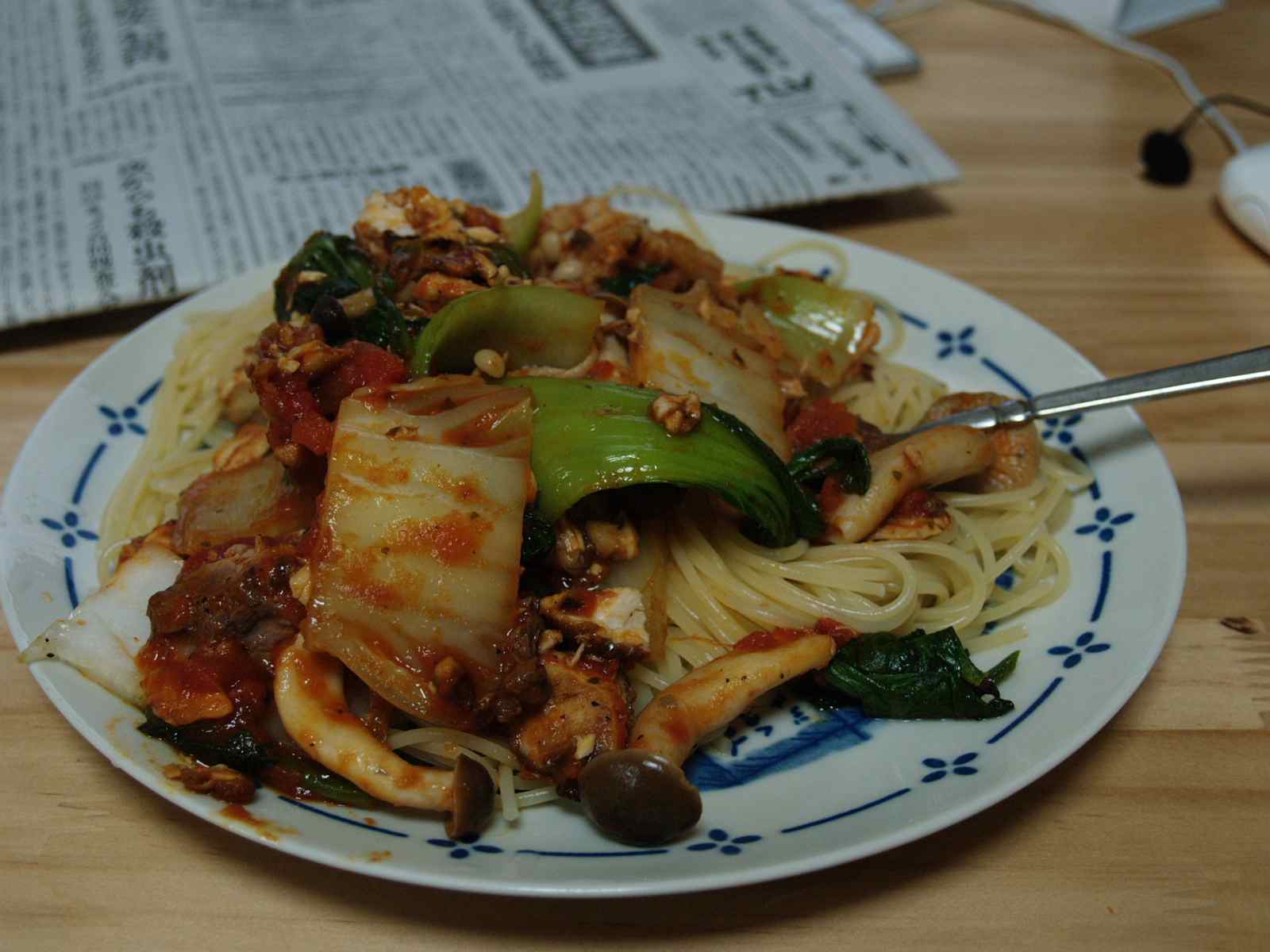tue

今日は、難易度が高いとして有名なブリ料理にトライした。
ブリを片手に持って、はてどうやって調理しようかと悩んだ。
プロの調理家はレパートリーが多いので、悩む。
考えたあげく、やはりここは、スパゲッティーに入れることにした。
ということで、F−1クッキング第5弾目は、「ブリ・スパゲッティー」
まず、ブリ2切れを、適当な大きさに切って、こんがりと焼けるまで、フライパンで焼く。
そして、冷蔵庫にある、ありったけの野菜を全て適当なサイズに切り投げ込む。
野菜の量は好みにもよるが、無難な線は、金曜日まで野菜が残るように、均等配分するのがよい。
料理の初心者の典型的な悩みは、「野菜を買っても使い切る前に腐ってしまうわ」だが、
とりあえず、あるったけの野菜を、会社が減価償却を見積もるように、期間配分して使えば、そのような問題は起きない訳だ。
お味のほうは、ある意味、本場ナポリの「カオス」の側面が良く出ていた。
Last Sunday I bought a fish called "Buri" in Japanese, in English it looks like it's called amberjack.
Anyway, I decided to cook something with this amberjack.
As I held and observed it in my hand, I thought, hmmm what can I cook with this.
You know, my cooking database is too big that I always have difficultly deciding what to cook.
In the end, I decided to cook spagetthi, yummy.
So here goes my fifth sequel to the F-1 cooking, "amberjack spagetthi".
First you dice them into eatable sizes, and fry them for an appropriate length.
And then, chop every kind of vegetable in your fridge (with no exception emphasis added),
and chop them in appropriate sizes.
Just to give you a guide of the amount of vegetable you should put in this dish,
you can calculate how much days are remaining this week and divide that by the size of each vegetable.
You know, one of the most common complaints of those who are still at the early stage of cooking lives,
is "oh, I cannot use all the vegetables before they rot".
But, by using my methodology, which I got the hint from the notion of "depreciation" in accountancy,
you will never encounter this problem.
And the taste?
It reminded me of Napoli.
But only the chaotic aspect of it...
Yesterday Tomorrow
1 year ago
2 years ago
3 years ago